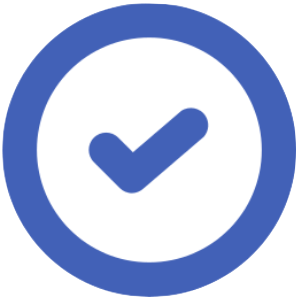 YOUTUBE VIDEO:
https://www.youtube.com/watch?v=rmaeXiz2J8Y
YOUTUBE VIDEO:
https://www.youtube.com/watch?v=rmaeXiz2J8Y
 Company & Role Presentation ESL Lesson Description
Company & Role Presentation ESL Lesson Description
OVERVIEW & OBJECTIVES
This ESL lesson plan on entrepreneurs vs. employees offers engaging activities, PDF worksheets, and digital materials designed for intermediate B1–B2 students. In this lesson, students will:
- Discuss the pros and cons of being an entrepreneur or employee in a preview conversation.
- Learn and use vocabulary related to business, career paths, and professional traits.
- Watch a video about three people who left their jobs to start businesses and complete comprehension tasks.
- Practice using target phrases like set up, aim to, stand out, and specialize in through gap-fill and discussion.
- Take part in a networking activity where they introduce a real or imagined company and respond to questions.
PREVIEW & DISCUSSION
Students begin this ESL lesson by helping Joanna, a woman deciding between a consulting career or launching her own start-up. They weigh the pros and cons of being an employee versus an entrepreneur. Next, students review key vocabulary by sorting terms such as a steady paycheck, risk taking, investors & funding, and office politics into categories of employment or entrepreneurship. After that, students join a discussion depending on their own experience. Entrepreneurs share how they got started, what traits matter most, and advice for others, while non-entrepreneurs consider if they would ever take the leap, what business they might start, and what aspects of running a company they would like or dislike. Finally, students predict what percentage of start-ups fail in the first years and discuss why.
VIEWING ACTIVITY
In this section, students watch a video about three people who left their jobs to pursue start-ups. The video highlights their reasons for making the leap, the role of Antler in guiding entrepreneurs, and the qualities that set successful founders apart. Students complete a matching task by linking background details to each entrepreneur, such as career history, education, or family influence. They then identify the three traits that Antler’s co-founders look for: spike, inner drive, and tenacity. Finally, students summarize tips given by the entrepreneurs about solving real problems, building a strong support system, and not starting alone.
VIEWING FOLLOW-UP
After the video, students discuss what ideas, tips, or stories stood out and why. They then think of other entrepreneurs they know and the companies they created, focusing on how those businesses solved real problems. In the next task, students complete a company pitch for Joanna’s business, All Women Co., using target phrases like deal with, set up, specialize in, and stand out. This structured gap-fill helps them practice using precise business language. Lastly, students connect Joanna’s sentences to categories such as target market, mission, founding story, and main responsibilities.
INTRODUCE YOUR ORGANIZATION: NETWORKING PRACTICE
Students finish with a practical networking activity. They choose one option: describing their current company or role, imagining they launched a start-up, or presenting an existing company they admire. They discuss type of company, target market, mission, products or services, and personal responsibilities. After preparing, they role-play a networking event where they introduce themselves and their organizations, ask follow-up questions, and use key phrases such as specialize in, cater to, aim to, and play an active role in. As an alternative, students can choose specific discussion prompts about challenges at work, freedom and impact, dreams, business ideas that stand out, or the role of tenacity in their careers.
BENEFITS OF USING THIS ENTREPRENEUR VS. EMPLOYEE ESL LESSON PLAN
Teachers gain a structured, ready-to-use lesson that sparks discussion on a real-world topic. Students practice speaking through debates, role-plays, and problem-solving. They improve business-related vocabulary and apply it in meaningful contexts. The video adds authentic input that motivates learners and builds listening skills. The activation task ensures students leave class with confidence in presenting ideas clearly and professionally.
 Video Description
Video Description
 Lesson Activities
Lesson Activities
Entrepreneurship, Employment, Companies, Traits, Roles, Presenting
Business, Careers, Traits, Motivation, Responsibility
Phrases for Presenting a Company, Role, or Organization
Introducing Job Roles & Organizations, Quiz & Review, Lesson Reflection
 Lesson Topics
Lesson Topics
Entrepreneurship, Employment, Companies, Traits


 Like us on facebook
Like us on facebook
